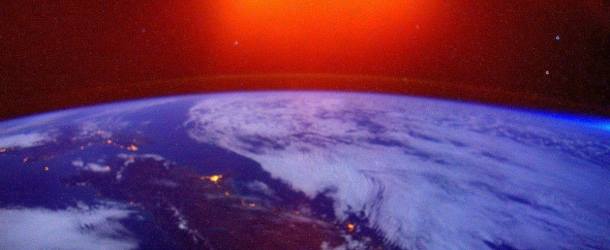Test Quantum Mechanics in Space — Invest US$1 Billion

(Nature) Interest in taking quantum technology into space is growing. Yet, so far, most nations have focused on devices that have commercial or security applications. This article and its authors set forth the main research challenges and make the case for establishing a billion-dollar international collaboration to test quantum mechanics in space and achieve breakthroughs.
Putting a quantum interferometer in orbit would require great technical, technological and scientific leaps. Here the authors set out the main research challenges and make the case for establishing that billion-dollar international collaboration.
Background for the need: Quantum-matter interferometers are complex, bulky and difficult to calibrate. The apparatus must be shielded from outside gases, light and vibrations. The larger a particle gets, the more likely it is to interact with its surroundings, washing out its quantum behaviour. It takes longer to produce interference, because the quantum waves spread more slowly. That means keeping the particle stable for longer.
Gravity is a limitation. Tabletop experiments can run for only a few seconds before the particles fall onto the bench. The answer is to work in space.
Scientists will need to:
1 Select particles: Physicists need to assess the mass, size and shape of the test particles that would be used, as well as their chemical, electrical and optical properties. All of these will dictate the experiment’s design. The payload must be able to handle particles with a range of masses and sizes, to track how quantum behaviour scales.
Glass nano-beads are good test candidates. These nanometre-sized spheres made of silica or hafnium dioxide are already widely used in ground-based experiments.
2 Choose gratings and detectors
A grating — a series of slits — must be placed along the path of the particles to reveal their quantum behaviour (see ‘Quantum test’). This is typically a solid mask. However, such masks can trap large particles, reducing the grating’s effectiveness. Optical gratings are an alternative widely used on the ground, in which laser light acts as a grid.
3 Address cooling, vacuum and noise
Before test particles enter the interferometer, they must be cooled to states that have minimal energy and motion (around 10–6 kelvin). This can be done using lasers, with methods used on the ground. The whole experimental apparatus would also need to be cooled down. Temperatures of 0.1 K have been achieved in space using cryostat devices based on mixtures of helium isotopes. However, the amount of helium required limits the mission’s lifetime. Researchers need to weigh up such trade-offs.
4 Find stable orbits
Space engineers must establish which orbits to put the satellite in to avoid jostling the particles. The main aim is to minimize acceleration and other changes in gravitational forces.
5 Invest and collaborate
When implemented in space, the costs of testing the limits of quantum superposition — being in two or more different physical states at the same time, which is the fundamental property of quantum systems — will exceed current national research budgets.
Europe has taken the lead. Large-particle interferometry is one of three priority areas (together with cold atoms and entangled photon experiments) in the most recent ESA Intermediate Strategic Report, issued in 2017.
Since then, the European Union has invested €500,000 in QTSpace, a project aimed at building a quantum space community involving researchers and companies from 46 countries (www.qtspace.eu). The Quantum Space Network initiative — a parallel body to the Quantum Community Network established within the EU Quantum Flagship programme — is liaising with policymakers, funding bodies and ESA.



















